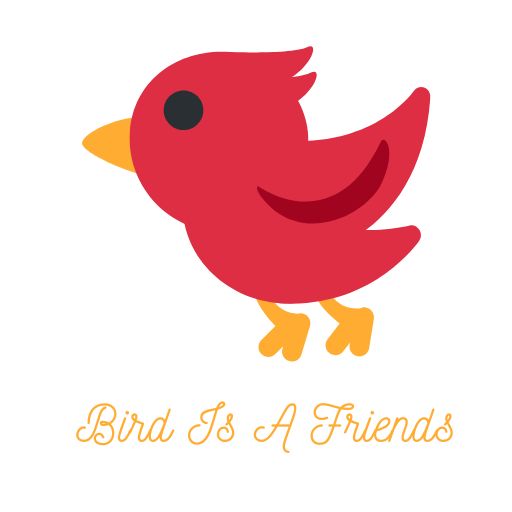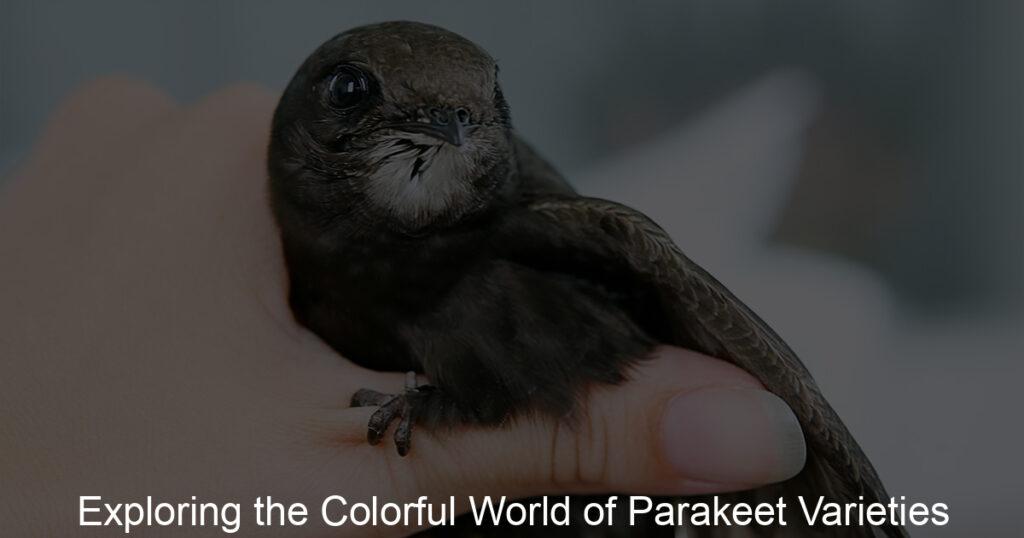
Introduction to Multi-Canary Housing
When it comes to providing a comfortable and safe environment for our feathered friends, the canaries, multi-canary housing is a concept that stands out. This approach to bird housing is not only efficient but also beneficial in numerous ways. Let’s delve deeper into this concept and understand its benefits.
- Understanding the concept of Multi-Canary Housing
- Benefits of Multi-Canary Housing
- Social Interaction: Canaries are social birds. They enjoy the company of their kind, and multi-canary housing provides them with an opportunity to interact and communicate, promoting a healthier and happier life.
- Space Efficiency: Instead of having multiple cages for each bird, multi-canary housing allows you to keep several birds in one cage, saving space in your home or bird room.
- Cost-Effective: Maintaining multiple cages can be expensive. With multi-canary housing, you only need to invest in one large, well-equipped cage, reducing the overall cost of bird housing.
- Enhanced Bird Health: Studies have shown that birds kept in social groups tend to be healthier and live longer. They are less likely to develop behavioral problems and more likely to engage in natural behaviors, contributing to their overall well-being.
Multi-Canary Housing is a bird housing approach that involves keeping more than one canary in a single cage or aviary. This method is often used by bird enthusiasts and breeders to promote social interaction among birds, save space, and enhance the overall well-being of the canaries. However, it’s crucial to ensure that the housing environment is spacious enough and well-equipped to accommodate multiple birds without causing stress or discomfort.
There are several benefits associated with Multi-Canary Housing. Let’s explore a few:
In conclusion, Multi-Canary Housing is a beneficial and efficient approach to bird housing. It not only promotes social interaction among birds but also saves space and reduces costs. However, it’s essential to ensure that the housing environment is adequately equipped and spacious enough to accommodate multiple birds comfortably.
Canary Bird Housing Solutions
When it comes to housing your canary birds, there are several options available. The type of cage you choose can significantly impact your birds’ happiness and health. Let’s explore some of the most common types of multi-canary cages.
Types of Multi-Canary Cages
There are three primary types of cages suitable for housing multiple canaries. Each type has its own unique features and benefits.
- Single-level Cages
- Multi-level Cages
- Flight Cages
Single-level cages are the most basic type of canary cage. They provide ample space for your birds to move around, but they don’t offer much vertical space. These cages are ideal for a small number of birds and are easy to clean and maintain.
Multi-level cages, as the name suggests, have multiple levels or tiers. These cages provide your birds with more vertical space to fly and explore. They are suitable for a larger number of birds and can make your birds’ environment more stimulating and enjoyable.
Flight cages are the largest type of canary cages. They provide plenty of space for your birds to fly freely, mimicking their natural habitat. Flight cages are ideal for a large flock of canaries and can contribute to their physical and mental well-being.
Choosing the right cage for your canaries is crucial. It’s not just about the size, but also about the design, material, and accessibility. Remember, a happy canary is a healthy canary!
Choosing the Right Cage for Your Canaries
When it comes to housing your canaries, choosing the right cage is crucial. There are three key factors to consider: size and space requirements, material and construction, and accessibility and cleaning.
- Size and Space Requirements
- Material and Construction
- Accessibility and Cleaning
Canaries are active birds that need room to fly and exercise. A cage should be at least 24 inches long, 18 inches wide, and 18 inches high. But remember, bigger is always better. If you’re housing multiple canaries, you’ll need even more space. Each bird should have enough room to fly and move around without bumping into others.
The material of the cage is just as important as its size. Canaries prefer cages made of wire, as they like to climb. The bars should be spaced no more than 1/2 inch apart to prevent the birds from getting stuck. The cage should be sturdy and well-constructed, with no sharp edges or loose parts that could harm the birds.
Lastly, the cage should be easy to clean and access. Look for a cage with a removable bottom tray for easy cleaning. The doors should be wide enough to allow you to reach in and clean the cage, change food and water, and handle the birds if necessary. Regular cleaning is essential to keep your canaries healthy and happy.
In conclusion, choosing the right cage for your canaries involves considering the size, material, and accessibility of the cage. By taking these factors into account, you can ensure your birds have a safe, comfortable, and stimulating environment.
| Criteria | Details |
|---|---|
| Size | At least 24 inches long, 18 inches wide, and 18 inches high |
| Material | Wire, with bars spaced no more than 1/2 inch apart |
| Accessibility and Cleaning | Removable bottom tray, wide doors for easy access |
Peaceful Bird Cohabitation
Living peacefully with others is not just a human trait. Even our feathered friends, like canaries, can coexist harmoniously with their kind. Let’s delve into the world of canary bird companionship and understand how these beautiful creatures socialize and benefit from each other’s company.
Canary Bird Companionship
Canaries are known for their vibrant colors and melodious songs. But did you know they also have a social side? Let’s explore this further.
- Understanding Canary Bird Socialization
- Benefits of Canary Bird Companionship
Canaries, unlike some other bird species, are not naturally flock birds. However, they can learn to live together peacefully. They enjoy the company of their kind, especially when they are raised together from a young age. They communicate through a series of chirps and songs, and often mimic each other’s sounds. This social interaction is a vital part of their daily life.
Having companions can greatly enhance a canary’s quality of life. It provides them with mental stimulation and reduces feelings of loneliness. Canaries that live with companions often exhibit healthier behaviors, such as regular preening and active exploration of their environment. They also tend to sing more, which is a sign of a happy and healthy bird.
In conclusion, canary bird companionship is a fascinating topic. These birds, while not naturally social, can form strong bonds with their kind when raised together. Their interactions and the benefits they derive from companionship are truly remarkable. This understanding can help us create a more harmonious and enriching environment for our feathered friends.
Creating a Peaceful Multi-Canary Living Environment
Creating a peaceful environment for multiple canaries to live together requires careful planning and consideration. Here are three key steps to ensure your feathered friends cohabitate harmoniously.
- Proper Cage Placement
- Providing Adequate Resources
- Monitoring Bird Interactions
Where you place your canary’s cage can significantly impact their comfort and wellbeing. It’s crucial to keep the cage in a quiet, calm area away from loud noises and disturbances. The cage should be placed at eye level, away from drafts, direct sunlight, and kitchen fumes. This will help your canaries feel safe and secure, promoting peaceful cohabitation.
Each canary needs its own resources to avoid competition and conflict. This includes separate food and water dishes, perches, and toys. Providing each bird with its own resources ensures they don’t feel the need to fight for survival, leading to a more peaceful environment.
| Resource | Quantity per Canary |
|---|---|
| Food dish | 1 |
| Water dish | 1 |
| Perch | 1 |
| Toy | 1 |
Even with proper cage placement and adequate resources, it’s important to monitor your canaries’ interactions. Look for signs of aggression or bullying, such as one bird always chasing another or a bird that’s always alone. If you notice these behaviors, it may be necessary to separate the birds or seek advice from a bird behavior expert.
By following these steps, you can create a peaceful and harmonious living environment for your canaries, ensuring they live happily together.
Canary Bird Cage Design
Designing a cage for multiple canaries requires careful consideration. It’s not just about providing a space for them to live, but also about creating an environment that promotes their well-being and happiness. Let’s explore the essential elements of a multi-canary cage.
Essential Elements of a Multi-Canary Cage
There are three main elements that every multi-canary cage should have. These are perches, feeding and watering stations, and enrichment items.
- Perches: Canaries love to hop and fly from perch to perch. Providing multiple perches at different heights and sizes will allow your birds to exercise and play. Make sure the perches are made from safe, non-toxic materials. Natural wood perches are a great option as they also help to keep the canaries’ claws trimmed.
- Feeding and Watering Stations: Each canary should have access to fresh food and water at all times. It’s best to have multiple feeding and watering stations to prevent competition and ensure that all birds can eat and drink comfortably. Remember to clean these stations regularly to prevent the spread of diseases.
- Enrichment Items: Canaries are intelligent birds that need mental stimulation. Enrichment items such as toys, mirrors, and bells can keep them entertained and prevent boredom. Be sure to rotate these items regularly to keep your canaries interested.
Remember, a well-designed cage can greatly improve the quality of life for your canaries. It’s not just about the physical space, but also about creating an environment that caters to their natural behaviors and needs.
Designing for Easy Maintenance
When it comes to canary bird cage design, ease of maintenance is a crucial factor to consider. By choosing the right materials, organizing cage elements for accessibility, and sticking to a regular cleaning schedule, you can make the maintenance process much simpler and more efficient. Let’s delve into these aspects.
- Choosing Easy-to-Clean Materials
Materials play a significant role in the ease of cleaning your canary bird cage. Opt for non-toxic, durable, and easy-to-clean materials like stainless steel or powder-coated metal. These materials are not only safe for your birds but also resistant to rust and easy to wipe clean. Avoid wooden cages as they can harbor bacteria and are difficult to clean.
- Organizing Cage Elements for Accessibility
How you arrange the elements within the cage can greatly impact the ease of cleaning. Place perches, feeding stations, and enrichment items in such a way that they are easily removable for cleaning. Avoid overcrowding the cage as it can make cleaning more challenging. A well-organized cage not only makes cleaning easier but also creates a more comfortable environment for your canaries.
- Regular Cleaning Schedule
Sticking to a regular cleaning schedule is vital for maintaining a healthy environment for your birds. Daily tasks should include removing food and water dishes for cleaning, sweeping out loose feathers and droppings, and wiping down accessible surfaces. A more thorough cleaning, including disinfecting the cage and washing all cage elements, should be done weekly. Regular cleaning prevents the buildup of bacteria and keeps your birds healthy.
In conclusion, designing a canary bird cage for easy maintenance involves careful material selection, strategic organization of cage elements, and adherence to a regular cleaning schedule. By following these guidelines, you can ensure a clean, healthy, and comfortable home for your canaries.
Co-Living for Canaries: Case Studies
Canaries, like many other birds, can benefit greatly from co-living. Let’s explore some successful examples of multi-canary housing.
Successful Multi-Canary Housing Examples
Here are two case studies that demonstrate the potential of multi-canary housing.
- Case Study 1: A Harmonious Flock
- Case Study 2: Overcoming Initial Challenges
In this case, a group of five canaries were introduced to a large, spacious cage with multiple perches and feeding stations. The owner took care to introduce the birds to their new environment gradually, allowing them to adjust at their own pace. Over time, the canaries formed a harmonious flock. They began to sing together, eat together, and even preen each other, demonstrating a level of companionship and harmony that was truly remarkable.
This case study involves a pair of canaries who initially struggled with cohabitation. The birds were introduced to each other in a neutral space, but they initially showed signs of aggression. The owner, however, did not give up. They monitored the birds closely, intervened when necessary, and provided plenty of toys and distractions. Over time, the canaries began to tolerate each other, and eventually formed a bond. This case study shows that with patience and the right approach, even initially challenging situations can be overcome.
These case studies demonstrate that successful co-living for canaries is possible, but it requires careful planning, patience, and a deep understanding of canary behavior. In the next section, we will discuss the key takeaways from these case studies and how you can apply them to your own multi-canary housing situation.
Key Takeaways from Multi-Canary Housing Case Studies
As we delve into the world of multi-canary housing, there are several key lessons that we can learn from various case studies. Let’s explore these important takeaways:
- Importance of Proper Cage Selection
- Role of Regular Monitoring
- Benefits of Canary Bird Companionship
Selecting the right cage is a crucial step in multi-canary housing. The cage should be spacious enough to allow the birds to move freely and comfortably. It should also have adequate perches and feeding stations to cater to the needs of all the birds. A case study showed that canaries housed in a well-selected cage exhibited better health and happiness levels compared to those in cramped cages.
Regular monitoring plays a pivotal role in ensuring the well-being of the canaries. It helps in early detection of any signs of distress or disease, allowing for timely intervention. In one case study, regular monitoring helped identify a minor conflict between two canaries, which was quickly resolved, preventing any major issues.
Canaries, like many other birds, thrive in the company of their kind. Companionship can significantly improve their mental health, reducing stress and promoting happiness. A case study highlighted how a previously solitary canary showed noticeable improvements in its behavior and singing abilities after being introduced to a companion.
In conclusion, proper cage selection, regular monitoring, and fostering companionship are key to successful multi-canary housing. By understanding and implementing these takeaways, we can create a harmonious and healthy environment for our feathered friends.
Conclusion: The Art of Multi-Canary Housing
As we draw to a close, let’s take a moment to revisit the key principles and insights we have gathered about multi-canary housing. It’s a delicate art, but with the right knowledge and understanding, it can be mastered to ensure the happiness and well-being of your canary birds.
- Recap of Multi-Canary Housing Principles
- Final Thoughts on Canary Bird Housing Solutions
Throughout this article, we’ve learned that the primary principles of multi-canary housing revolve around providing ample space, ensuring a peaceful cohabitation environment, and designing the cage in a way that caters to the canaries’ natural behaviors and needs. We’ve also seen how these principles have been successfully applied in various case studies.
Canary bird housing solutions are not a one-size-fits-all. Each bird is unique and requires a tailored approach. However, the principles we’ve discussed provide a solid foundation for creating a comfortable and enriching environment for multiple canaries to coexist. Remember, the goal is not just to house your canaries, but to create a home where they can thrive.
In conclusion, the art of multi-canary housing is a journey of understanding and catering to the needs of your birds. It’s about creating a space where they can live harmoniously together. It may require some trial and error, but with patience and persistence, you can create a multi-canary housing solution that is both practical and beneficial for your feathered friends.








